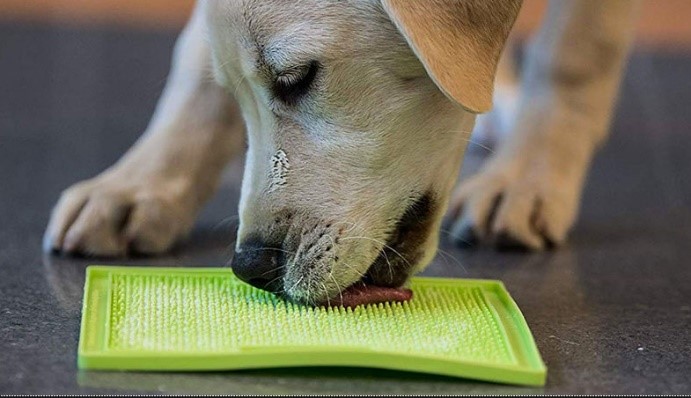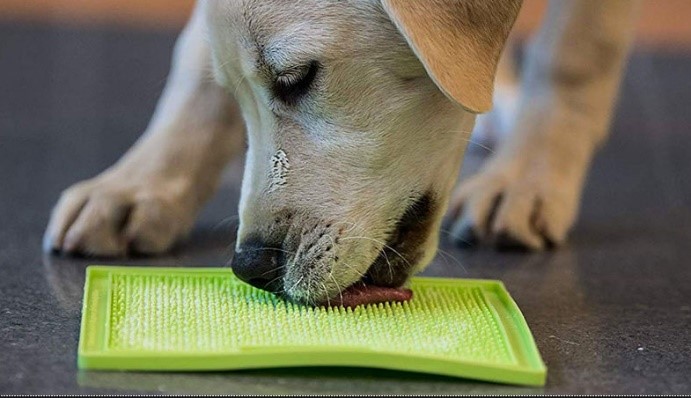Michele Rosenbaum, VMD, DACVD, and Dana Liska, DVM, DACVD

Photo courtesy Josh Schulz BVSc
Meet Toby, a 2-year-old Labrador retriever who is outgoing, friendly, loves to play ball, go for long walks in the woods and be near his owners Brian and Ashley.
Toby started rubbing his face, scratching his ears and sides, and licking his paws when he was about 6 months old. At first Brian and Ashley thought the problem would go away after a few days if they applied an over-the-counter flea control product, even though no fleas were seen.
The itching got worse and started to wake them up at night. That’s when they tried oatmeal baths, Benadryl, and a hydrocortisone spray from their local pet store. They even changed his food to a grain-free hypoallergenic diet recommended on an itchy dog blog they read online. Toby liked all the attention, but none of these treatments helped; his itching got worse and Brian and Ashley felt progressively more frustrated.
When Toby started losing hair and developing red patches of skin, Brian and Ashley were very worried and called their veterinary clinic for advice.
Does this scenario sound familiar? It should! Allergic dermatitis is the number-one reason for veterinary visits.1 Dogs with allergic dermatitis may have increased stress.2 Most cases will be lifelong, requiring repeated clinic visits. We want them to have a positive experience. Encourage your clients to become early adopters of the following Fear Free dermatology tips to make that happen.
- Brian and Ashley read that Labs were prone to allergies, so they started desensitizing him at home as a puppy. They touched his head, paws, pinna, ear canal opening, and underside, and trained Toby to lie calmly on his side. This took patience, and they rewarded Toby with his favorite treats when he accepted their touch calmly.
- They also took Toby to visit the practice between exams to interact with staff, get treats, and have play time. Toby enjoyed going to the clinic because it was a positive, fun experience and he learned visits were not just for medical treatment.
 When Ashley called the practice, Mary, one of the practice customer service representatives (CSRs), was prepared to help. Mary had learned previously in her training that the common “phone fix” with over-the-counter recommendations was unlikely to help. She empathetically connected with Brian and Ashley’s concern and scheduled an appointment for Toby with the veterinarian, Dr. Taylor.
When Ashley called the practice, Mary, one of the practice customer service representatives (CSRs), was prepared to help. Mary had learned previously in her training that the common “phone fix” with over-the-counter recommendations was unlikely to help. She empathetically connected with Brian and Ashley’s concern and scheduled an appointment for Toby with the veterinarian, Dr. Taylor.
This is the first step on the path of real relief for itchy dogs like Toby. Mary asked Ashley several important questions about Toby and noted the responses in his emotional medical record.
- She asked if Toby gets anxious or stressed during veterinary visits. Luckily this did not describe Toby at all, but Mary knew Dr. Taylor would prescribe anxiolytic medications to give before the visit to help things go smoothly and to ensure a more positive experience for pets who do get stressed. Click to download the Fear Free Pre-visit Drug Chart.
- Mary asked Ashley and Brian to bring all of Toby’s previous medications to the appointment. It was a big bag full of many unused and partially used OTC products that clearly didn’t work!
- She also asked them not to bathe Toby before the appointment, because Dr. Taylor wanted to see him in all his itchy, smelly glory to help with collecting cytology samples.
- Mary asked Ashley to withhold feeding Toby before the appointment and to bring his favorite treats (chicken and spray cheese) to be used as food rewards during the appointment and procedures. Note: Hypoallergenic treats can be used in dogs with food allergies, such as balls of frozen almond butter, sweet potato treats, or canned hypoallergenic dog food.
- Mary asked Toby to fill out a dermatology history form when they checked in.
Toby arrived a bit early for his appointment. Ashley and Brian were very anxious to get him relief as none of them had gotten much sleep the night before. As usual, Toby was happy to see everyone and couldn’t wait to come inside. But for those patients not as eager, here is a helpful tip:
- Have dogs who are anxious, agitated or barking, and dogs with obvious skin infections (due to increased risk of spreading methicillin resistant infections) wait outside or in the car with their owner if temperatures are reasonable. Call or text when ready to see them, taking the patient and owner directly to a designated dermatology exam room, using treats to help guide them to the room.
While waiting with Toby, Ashley and Brian noticed the practice had further improved their Fear Free experience with the following techniques:
- Calming pheromones were everywhere: diffusers positioned strategically in the waiting room and exam room, the staff and doctors sprayed pheromones on their smocks and lab coats. The little dogs and cats in carriers received a pheromone sprayed blanket to cover the carrier. Everyone smiled at how adorable Toby looked in the pheromone -prayed bandana Mary had the owner put on Toby before he first came through the door.
- Toby didn’t slip or slide on the non-slip yoga mats on the floor and on the scale.
- It seemed at every turn Toby received a treat. The best was the adhesive lick pad spread with his favorite cheese by the weigh scale.

- Soft soothing music was calming and pleasant, especially when they were so worried about Toby!
Because of these Fear Free techniques his practice had adopted, Toby and his owners were ready to see Dr. Taylor in a calm and positive state of mind. As the patient’s veterinary professional team, you can work together to provide real relief of the stress and anxiety that allergic itch may cause for your patients. Using these Fear Free techniques in your practice will create a positive and calming experience for everyone.
References
- Most Common Medical Conditions that Prompt Veterinary Visits. Nationwide. March 28 2022. Retrieved October 11, 2022 from: Dermatitis, otitis externa among most common conditions that prompt veterinary visits (nationwide.com)
- Park, S-H, et al., Jpn J Vet Res, 2016 (v1.0) – Correlation of Cortisol and CAD (p.4)
This article was reviewed/edited by board-certified veterinary behaviorist Dr. Kenneth Martin and/or veterinary technician specialist in behavior Debbie Martin, LVT.


 Sponsored by our friends at Zoetis Petcare. APQ-01010R1
Sponsored by our friends at Zoetis Petcare. APQ-01010R1



